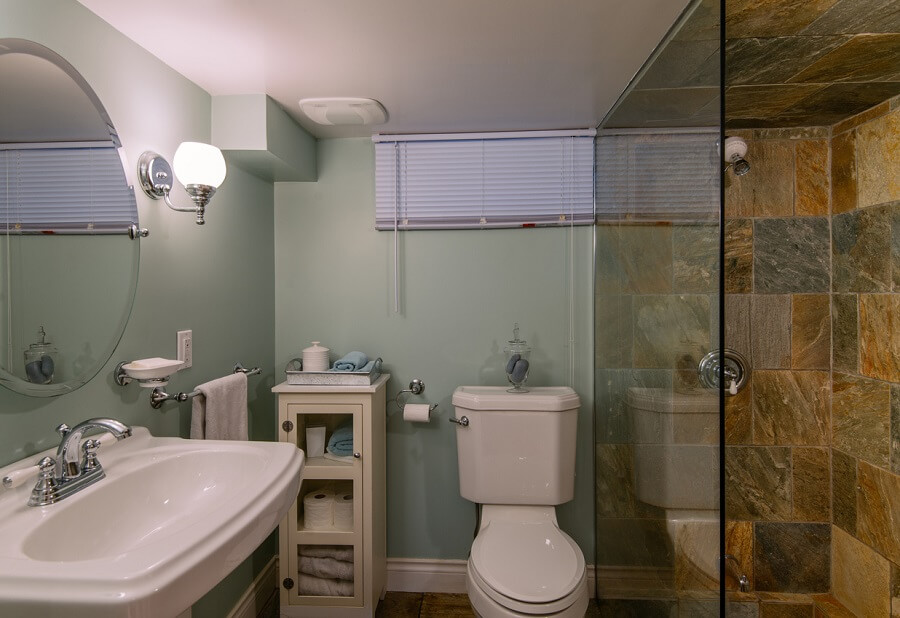When Etobicoke homeowners decide to expand their living space, many turn to basement renovations, transforming dark, unused spaces into functional, livable areas. One of the most sought-after additions is a basement bathroom, which can enhance both comfort and convenience. However, installing plumbing for a basement bathroom presents unique challenges compared to standard bathroom installations, requiring careful planning and execution. Understanding these challenges and considering key elements such as venting, draining, and costs will help ensure a smooth and successful installation.
Key Considerations in Basement Bathroom Plumbing
Basement bathroom plumbing involves several distinct steps and considerations, often more complicated than plumbing in other areas of the home. The first step is to assess the existing plumbing infrastructure. In most cases, basements are not initially equipped with the necessary water supply and drain lines, so adding these systems will require significant modifications. Installing pipes for water supply and waste drainage needs careful planning to avoid conflicts with the foundation and existing utilities. You can read more about the professional vs. DIY plumbing here.
Venting and Draining Challenges
Venting and draining considerations are among the most significant challenges when it comes to basement bathroom plumbing. In conventional plumbing, vents help release gases from the drainpipes and regulate air pressure in the system. In basements, however, installing traditional venting pipes can be tricky because of limited ceiling height and structural constraints. Proper venting is crucial to prevent foul odours and ensure the system functions efficiently.
Additionally, the drainage system must be planned carefully. Gravity-based drainage systems can be difficult to implement in basements due to the potential lack of slope in the floor. Homeowners may require a sewage pump or a macerating pump to move wastewater upwards to the home’s main drainage line. These systems allow wastewater to be pumped through the pipes, ensuring proper drainage despite the basement’s unique positioning below the main plumbing system.
Cost Breakdown for Basement Bathroom Plumbing
The cost of installing plumbing for a basement bathroom can vary significantly depending on several factors, including the complexity of the project, the size of the bathroom, and the extent of required plumbing modifications. Here’s a breakdown of typical costs associated with basement bathroom plumbing:
- Labour Costs: Labour is often the most significant portion of the cost, particularly when professionals are required to handle intricate plumbing issues. Depending on location, labour costs for plumbers can range from $50 to $200 per hour.
- Materials: The materials required for basement bathroom plumbing include piping, fittings, drainage systems, and venting components. The cost of materials can vary but typically falls between $500 and $2,000, depending on the system’s complexity.
- Venting and Drainage Solutions: If you need to install a sewage ejector pump or other drainage solutions, the cost of this equipment can range from $1,000 to $4,000 or more, including installation.
- Permits and Inspections: Basement bathroom plumbing often requires permits from local authorities, and these can cost anywhere from $100 to $500. Inspections after installation can add another $100 to $300 to the total cost.
On average, homeowners can expect to pay between $5,000 and $15,000 for complete basement bathroom plumbing installation, depending on the complexity and customization of the project.
Unique Challenges of Basement Renovation Plumbing
In basement renovations, plumbing installation presents additional challenges that must be carefully managed. For instance, many basements have low ceilings and irregular floor plans, which make running plumbing pipes a difficult task. Limited space can also make it hard to add or reroute pipes, requiring creative solutions to ensure the plumbing fits seamlessly with the renovation.
Another factor unique to basement renovations is the potential for water infiltration. Basements are more prone to moisture issues, which can affect the integrity of plumbing systems. It’s important to ensure that the plumbing is installed with moisture resistance in mind, particularly in areas where flooding may be a concern.
The Appeal of Basement Bathrooms in Renovations
Despite these challenges, basement bathrooms are increasingly popular among homeowners looking to expand their living space. In many cases, a basement renovation plumbing project is part of a larger plan to create a second living area, guest suite, or entertainment space. Adding a bathroom in the basement increases the functionality of the space and can significantly raise the home’s value. It also provides added privacy and convenience for family members or guests.
For those considering a basement bathroom installation, it’s important to consult with professionals who specialize in basement renovation plumbing to ensure that all aspects of the plumbing system are properly installed. With the right planning and expertise, a basement bathroom can be a highly functional and desirable feature of your home.
Contact D. Jason Plumbing Today
While basement bathroom plumbing poses unique challenges, including venting, draining, and cost concerns, the benefits of adding such a space to a home are significant. Proper planning and expert installation are key to overcoming these challenges and ensuring a successful basement renovation that maximizes your home’s potential. Contact D. Jason Plumbing to discuss the best solutions for your basement bathroom installations.
